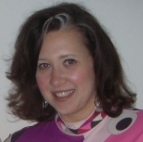 Jane Isenberg was already a successful writer when I met her ... oh, several years ago, at my very first Sisters in Crime meeting. Her first book, a memoir titled Going by the Book, won the James N. Britton award. Her Bel Barrett Mystery Series was well-known and well-loved. She has degrees from Vassar College, Southern Connecticut State College and New York University. On top of that, she taught English for forty years. Was I intimidated? You bet. Should I have been? Not at all. Jane has a warm humor and a sincere kindness that she lavishes on those who know her. She's retired from teaching now and lives in Issaquah, Washington with her husband Phil Thompkins. She's still writing, and still winning awards, though. The Bones and The Book is her latest, and won the prestigious Willa Award in 2013.
Jane Isenberg was already a successful writer when I met her ... oh, several years ago, at my very first Sisters in Crime meeting. Her first book, a memoir titled Going by the Book, won the James N. Britton award. Her Bel Barrett Mystery Series was well-known and well-loved. She has degrees from Vassar College, Southern Connecticut State College and New York University. On top of that, she taught English for forty years. Was I intimidated? You bet. Should I have been? Not at all. Jane has a warm humor and a sincere kindness that she lavishes on those who know her. She's retired from teaching now and lives in Issaquah, Washington with her husband Phil Thompkins. She's still writing, and still winning awards, though. The Bones and The Book is her latest, and won the prestigious Willa Award in 2013.
Inspiration for Jane seems to me to have come from rising up and meeting challenges. Here's her story.
<><><><><>
The Bones and the Book, a historical mystery set in Seattle's small Jewish community during the Gold Rush
and in 1965, was inspired by an idea I got 3,000 miles east of Seattle and a century and a century and a half later. In the mid-nineteen nineties I visited the Tenement Museum on Manhattan's Lower Eastside. The tour of the place where so many of our immigrant ancestors lived was fascinating and moving, but it wasn't until I hit the gift ship that inspiration struck. That's where I spotted a note card imprinted with a facsimile of the business card of a fortune teller named Dora Meltzer who had once lived in that very building. I assumed she was an Orthodox Jewish immigrant, and she intrigued me because fortune telling is prohibited by the rabbis. I figured she must have been very gutsy to disobey rabbinical strictures, and I've always had a soft spot for women who defy the rules men make for us. Standing there n line at the cash register with my credit card and that little note card in my hand, I figured this Dora Meltzer had a story and I wanted to know what it was. As I paid, it occurred to me that the only way I'd ever know her story was to make it up. That's when I decided that someday I'd write a book featuring an Orthodox immigrant girl who comes to New York's Lower Eastside at the turn of the Nineteenth Century and tells fortunes. Someday didn't come until I'd finished writing the last of my Bel Barrett Mystery Series in 2005.
By then, I'd moved from the east coast to Issaquah, Washington where, to my astonishment, for the first time in my life, I often found myself the only Jew in the room! Oy vey! This proved daunting, because my new
neighbors were curious about Jews and asked me many questions. If I found being Jewish here challenging in 2005, what had it been like for those Jews who came a hundred and fifty years ago? I began to explore Washington State history and the history of Jews in Washington. I focused on Seattle where Jewish hisotry is exciting because of all the conflict within the small Jewish community itself. As a conflict-averse Jew, I was upset to learn that Seattle's Jews didn't always play nicely together, but as a mystery writer I was delighted! Without conflict people don't get murdered. Free to begin my mystery about the immigrant Jewish fortune teller, I decided to move her to Seattle where the action was. Besides, the story of Jews on the Lower Eastside has been told many times, while the story of Seattle's Jews had yet to be fictionalized. I'd be researching and writing what I didn't
know, and that was a little scary, but also intriguing. My dicey decision was validated in 2013 when The Bones and the Book won a Will Award for Original Softcover Fiction from Women Writing in The West!
 |
| Jane, getting acquainted with the neighbors |
 |
| Jane, hanging with the local wildlife |
<><><><><>
If you want to find out more about Jane Isenberg and her books, here's a Link To Her Website and Jane's Blog - Notes to My Muses (you'll love this, I promise!)















